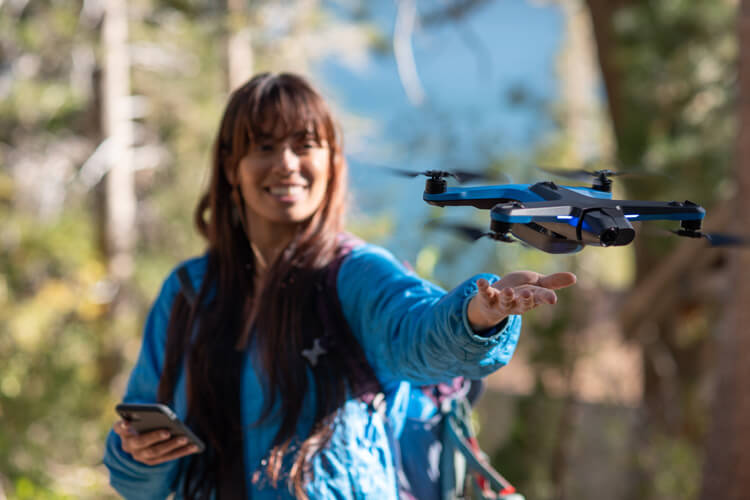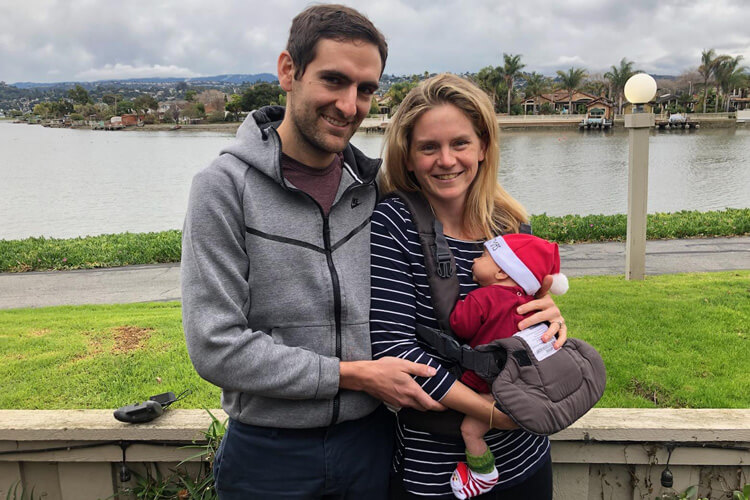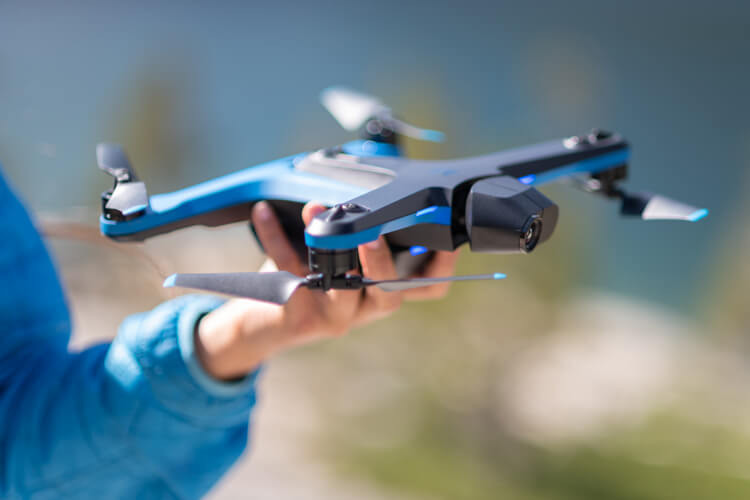When Adam Bry ’04 was sitting in a Colorado Academy Middle School classroom, already doing extra work on Upper School math, he could not have possibly envisioned where the future would lead him. True, he was already fascinated by radio-controlled airplanes. But drones? Drones were military tools. Certainly, they were not your next-door neighbor’s birthday present.
That was then. Today, Bry is Co-Founder and CEO of Skydio, a Silicon Valley company which produces one of the hottest drones on the market. “Drones are dumb, Skydio is smart, So smart it flies itself,” announces Skydio’s captivating marketing video for Skydio 2, as it tracks hikers, bikers, snowboarders, and climbers, all while avoiding any obstacle in its path.

Most drones are only as good as the pilots flying them. This drone takes the pilot out of the equation. Skydio uses one camera to record video and additional cameras to collect data, understand the physical world, and react to it. Want one of these autonomous magnesium wonders? Get in line.
Here’s what one technology reviewer says: “The Skydio 2 is an incredible piece of technology. As far as I know (as a robotics journalist, mind you), this represents the state of the art in commercial drone autonomy, and quite possibly the state of the art in drone autonomy, period.”
If Bry did not envision his future in Middle School, he certainly is looking ahead now. “It’s really early in the drone industry,” he says. “Think of the early days of the PC industry and see what has happened in 30 years. At Skydio, we spend our time thinking about the future of drones and how we are going to make it happen and deliver value.”
Understanding math on an intuitive level
Bry says that, when he looks back, he can connect the dots from CA to Skydio’s success today, starting in Sixth Grade, when he discovered he had a passion for math. He found extra challenges and help working one-on-one with the late master math teacher Richard Kelly as a Middle Schooler and then taking Upper School classes with Kelly.
Nearly two decades later, he can still remember how Kelly’s approach to teaching informed the way he learned and continues to do business. “It was not rote—here’s the formula, here’s how it works,” he recalls. “He wanted you to discover a mathematical concept, analyze and understand it on an intuitive level, and then make the jump to somewhere even more interesting. I’ve tried to do that through my whole engineering and business career.”
In Upper School Physics with “Doc” Hogan, Bry had an opportunity to see math connect to the real world in a powerful and direct way—particularly in the “popsicle stick bridge competition.”
“We were trying to build the most efficient bridge,” he recalls. “For the first time, I could use abstract math and physics principles to build something real and have it perform well.” That would be the foundation for the next series of dots in Bry’s life—from college, to graduate school, to Google, to Skydio.

Working with people who want to take a risk
After graduating from CA, Bry joined the third graduating class of Olin College of Engineering, a relatively unknown school at the time. What appealed to him was Olin’s focus on real-world problems and collaborative teamwork.
“It was such a new school, it attracted people who wanted to take a risk,” he says. “Faculty, staff, and students all turned down more prestigious offers to be there, and that attracted an amazing group of people.”
Today, 10 percent of the people working at Skydio are fellow Olin graduates.
By 2009, Bry was working on his master’s at MIT in a lab doing flight research. It was at this point that Boston weather and topography changed the direction of his career. Because the weather was often miserable, and there wasn’t much room to fly in an urban setting, the lab focused on creating a plane that could fly indoors, with on-board sensors making it autonomous, intelligent enough to understand its surroundings. Today, video of a fixed wing plane flying 25 mph around obstacles in a Cambridge parking garage seems almost quaint, but it was the foundation for bigger things to come.
At MIT, Bry raced on the Cycling Team which won the National Championship. He was chosen to be Co-Captain of the team, and he married the other Co-Captain, Katie Quinn. Today, they are the proud parents of baby Claire Quinn Bry.
From MIT, Bry joined Google’s Project Wing Drone Delivery team. But he could see more meaningful potential for drones than just “delivering sushi.” And so Skydio was born.

An endless stream of applications
Bry cannot disguise his excitement when he talks about the “endless stream of applications” he can imagine for an autonomous drone. He sees his product not just in the air above adventurers recording their latest conquest, but also being used by energy companies, utilities, first responders, the Department of Defense, oil and gas companies, and companies that inspect homes, power lines, and bridges.
Already in the works is a Skydio that sits in a dock, connects to the Internet, stores data in the cloud, and can be commanded to fly remotely and follow a routine for flying.
“This is really unique technology, and we are unlocking what we just imagined five years ago,” he says. But even more fun, he says, is working with the team he has assembled. “We have an incredible group of people, and as the company gets stronger, we can do better things even faster.”
Remember, drones are dumb….Skydio is smart.
